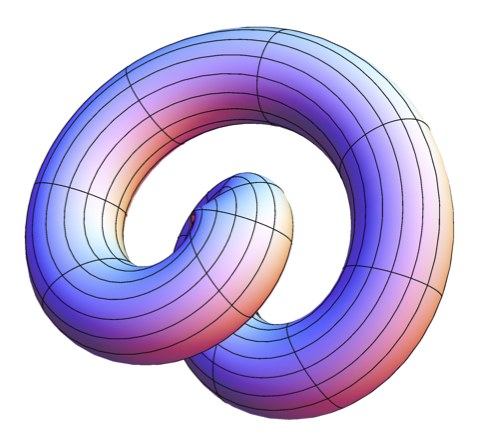

Advanced
Condensed
Matter Physics: Topological Insulators and Superconductors
PHYS 525b,
Spring 2019
Instructor: Prof. Marcel Franz
[Brim 461B, franz(at)physics(dot)ubc(dot)ca]
Lectures:
Tu&Th 12:30-14:00, MCLD-228
Office hours:
Tu
14:00-15:00 and by appointment in Brim 461B
Course TA:
Dr. Pedro Lopes [pedrolslopes(at)gmail.com ]
TA office hours: We 13:00-14:00,
Hennings 408A
Textbook : "Topological
Insulators and Topological Superconductors" by B. Andrei Bernevig with Taylor L.
Hughes (available in the bookstore)
The textbook is nice but contains too much material for a one
semester course. I will not follow it closely although it may be
useful as a background reading. The course will follow recent
literature including original research articles and review articles.
Some useful review articles are listed below. The first half of the
course will follow Hasan & Kane review article (below) with more
details supplied when needed.
I will also make use of the following edited volume and review
article:
Grades will be determined
based on biweekly assignments and a student presentation (70/30). Presentations
will follow recent research articles and will be held towards the
end of term. The scope, timing and the criteria for the
presentations will be announced in class.
Course
anouncements:
- The first
lecture will take place on January 3.
- The list of
suggested articles for student presentations has been posted.
Please review the list and let me know by email
before Feb. 15 which
article you wish to present.
- Schedule of
student presentations has been posted.
Assignments:
- [20 points] Please read the following review article: J. E.
Moore, "The birth of topological insulators", Nature
(London)
464, 194 (2010), which describes the historical framework
and gives a gentle overview of the field. Select and list 3 ideas
that you found most interesting or surprising. Hand in the list on January
10th during the lecture. [This assignment is graded pass/fail with "pass"
awarded for any sensible list showing evidence that you
actually read and thought about the paper.]
- [30 points, due Jan. 17]
hwk2
Solution
- [30 points, due Jan. 31]
hwk3
Solution
- [20
points, due Feb. 7 ]
hwk4
Solution
- [25
points, due Feb. 28] hwk5
Solution
- [35
points, due
Mar. 14] hwk6
Solution
- [35
points, due
April 5] hwk7
Please note: Working out the assignments is perhaps the single most
important aspect of this course, absolutely essential for
understanding the material. In
order to receive credit assignment must be handed in by the end of
the lecture on the due date. If you foresee a serious
conflict that might prevent you from completing the problems by the
due date please let me know ahead
of time. I will consider extending the due date if there is
a legitimate reason or if the conflict affects several students in
the class. In fairness to other students who completed
assignment on time last minute requests for extension will not be
granted.
Lecture
notes:
Lecture
1 Lecture
2
Lecture 3 Lecture
4 Lecture
5
Lecture 6 Lecture
7
Lecture
8 Lecture
9
Lecture 10 Lecture
11 Lecture
12 Lecture
13
Lecture
14
Lecture
15
Lecture
16
Lecture
17
Lecture
18 Lecture_18_slides
Lecture
19
Lecture
20
Lecture
21
Lecture
22
Lecture
23
Course
outline:
The course will present a gentle introduction into the field of
Topological Insulators, Semimetals and Superconductors suitable both
for experimental and theoretical students. The prerequisite is only
the basic graduate-level solid state physics as taught e.g. in our
PHYS 502. At the end of the course students will have gained a solid
grasp of the physics that underlies these interesting materials,
understand various exotic phenomena that they enable, and be
prepared to read the current literature and conduct independent
research in the field. The topics covered will depend to some degree
on students' interests and will include:
- Topological band theory
- The Chern number, Thouless pump and some examples in 1D and 2D
systems
- Quantum Hall effect and the Haldane model for graphene
- Time-reversal symmetry and the Z2 invariant for the quantum
spin Hall systems
- The Kane-Mele model and 2D topological insulators
- Topological insulators in 3D: theory and experiment
- Properties of the topologically protected edge and surface
states
- Bulk properties, axion electrodynamics, wormhole and Witten
effect
- Dirac and Weyl semimetals
- Elements of topological superconductivity
- Majorana fermions in solid state devices
- Higher order topological insulators and superconductors
The emphasis will be on the physical concepts with minimum time
spent on abstract formalism. The concepts will be developed mainly
through the study of examples and making analogies to known physical
phenomena.
Although PHYS 503 is listed as a formal prerequisite for this course
I intend to make the presentation self-contained and am happy to
waive that requirement for students with reasonable background in
condensed matter physics.


